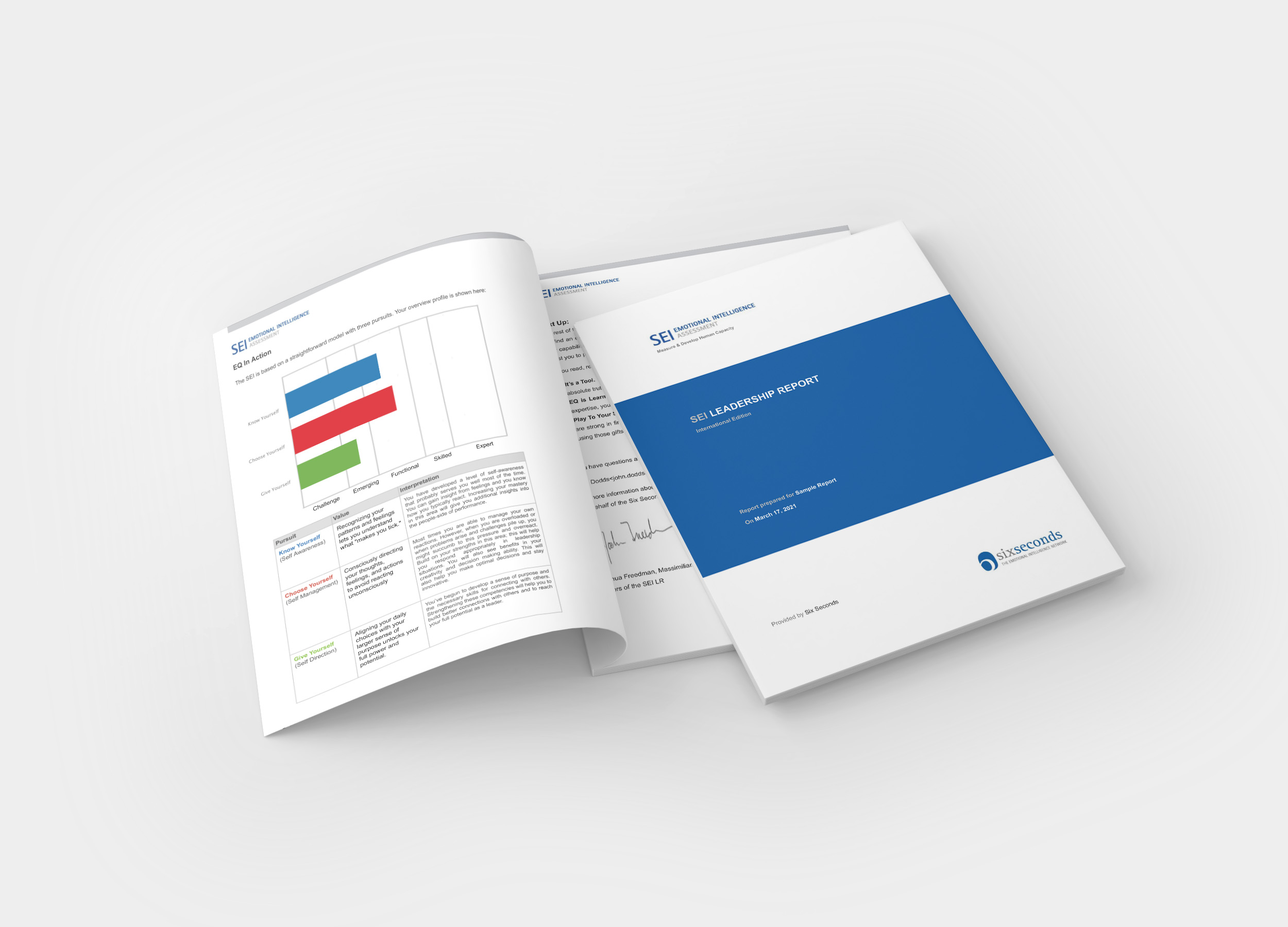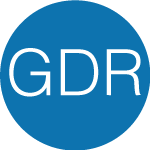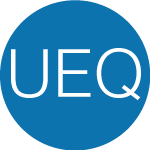Six Seconds
Emotional
Intelligence
Assessment (SEI)
Misura e allena le tue competenze socio emotive

Leadership Report
Lo strumento di spicco per far crescere le competenze di Intelligenza Emotiva – con e attraverso le persone.
Neural Network
L’analisi più avanzata di qualsiasi altro strumento di EQ sul mercato, guida le persone all’applicazione pratica dell’Intelligenza Emotiva attraverso feedback derivanti dall’IA.
Development Report
Feedback approfondito sulle competenze EQ e sul loro impatto sui Fattori di Successo, oltre a metodi specifici per accrescere l’EQ
Group Development Report
Un quadro strutturato per coinvolgere un gruppo o un team sul perché e sul come sviluppare l’EQ
Unlocking EQ Profile
Lo strumento perfetto per introdurre l’EQ e il framework teorico a cui appartiene il modello Six Seconds
360
Strumento di feedback approfondito e multi-rater per misurare le prestazioni dell’Intelligenza Emotiva, ovvero il modo in cui la tua EQ si manifesta e ha un impatto sugli altri
Brain Profiles
Istantanee degli stili e dei talenti del tuo cervello per utilizzare efficacemente i dati emotivi e cognitivi
Youth Version
Un potente strumento per misurare e sviluppare l’Intelligenza Emotiva di ragazzi e ragazze
Il Six Seconds Emotional Intelligence Assessment (SEI®) è la soluzione completa per la misurazione e lo sviluppo dell’EQ. Questa suite di report efficaci e ben validati misura l’EQ e fornisce alle persone un quadro di riferimento per mettere in pratica l’Intelligenza Emotiva.
Il SEI Assessment è utilizzato in oltre 150 Paesi per un’ampia gamma di esigenze di formazione, coaching, selezione e sviluppo. Nasce dalla combinazione di una solida analisi psicometrica, dalla funzionalità per un’ampia gamma di esigenze e dalla rilevanza globale.
Cosa rende il SEI un assessment così efficace?
Il SEI Assessment è unico perché non si limita a fornire feedback, ma offre un quadro di processo che mette le persone in grado di allenare effettivamente l’Intelligenza Emotiva. Il SEI collega inoltre l’EQ alla vita reale; comprende due questionari, una valutazione degli attuali Fattori di Successo (ad esempio, efficacia e relazioni) e i livelli delle competenze di EQ: questo mette l’Intelligenza Emotiva nel contesto di importanti risultati lavorativi e di vita.
Il SEI è una misura scientificamente validata e pratica, con un modello orientato all’azione che supporta le persone nell’uso e nel miglioramento delle loro competenze di EQ. Costruito sul modello Six Seconds dell’Intelligenza Emotiva, il SEI si differenzia:
Laddove altri strumenti forniscono una diagnosi, il SEI fornisce un quadro d’azione.
Il modello è abbastanza semplice da poter essere accessibile a tutti/e, ma abbastanza sofisticato da guidare una trasformazione a lungo termine.
Il SEI è condotto da un team globale, disponibile e validato in oltre 20 lingue.
Sebbene il SEI sia progettato per l’apprendimento e lo sviluppo, ha il rigore statistico necessario per essere utilizzato nelle applicazioni avanzate.
Cosa comprende il SEI?
Il SEI Assessment comprende diversi strumenti e molti report.
Si caratterizza per:
1. Approfondimenti rapidi
I Brain Profile, ad esempio, sono sintesi efficaci di una pagina, ideali per la formazione.
2. Quadri di approfondimento
Ideali per il coaching e i programmi di approfondimento, i report portano le persone alla consapevolezza della propria EQ e a un percorso per sfruttare l’EQ con il modello Six Seconds.
3. Soluzioni personalizzate
Basandoci sulla piattaforma SEI, abbiamo co-creato una serie di report personalizzati che applicano l’EQ a varie esigenze specifiche.
Cosa rende il SEI così rilevante?
Nelle mani di un professionista, questi dati sono incredibilmente potenti. Possiamo iniziare a parlare con i nostri clienti di alcuni punti di forza e di ciò che li ostacola osservando i punteggi delle varie competenze. Naturalmente, il feedback di una valutazione non è solo questo: utilizziamo i dati per guidare la conversazione e sosteniamo il cliente nel raggiungimento dei suoi obiettivi.
Uno dei vantaggi principali del SEI è che in realtà abbiamo due risultati in uno. Abbiamo le scale EQ e un secondo relativo ai Fattori di Successo. Questo ci permette di avere il “perché”, cioè il motivo per cui il cliente vuole esplorare e sviluppare l’EQ. In quanto professionista potrai utilizzare questi dati per aiutare i tuoi clienti a inquadrare la necessità di un cambiamento e a comprendere i suoi obiettivi. Poi, esaminando le competenze EQ di cui sopra, sarà facile iniziare a focalizzare la conversazione su questi risultati chiave.
Quando si utilizza il SEI?
Il set di strumenti è ampio e profondo. I Brain Profile sono perfetti per la formazione mentre i Development report sono perfetti per i programmi di crescita a lungo termine e per il coaching.
Inoltre, i report personalizzati del SEI applicano il modello ad aree specifiche, dal cambiamento alla fiducia, dalle vendite alla crescita personale.
Gli utilizzi tipici includono:
- Sviluppo professionale e personale
- Formazione e coaching (ad esempio.. leadership, lavoro di squadra, gestione delle performance, stress, comunicazione, competenze delle persone per la gestione dei progetti, ecc.)
- Selezione, gestione dei talenti
- Valutazione e ricerca pre/post assessment








